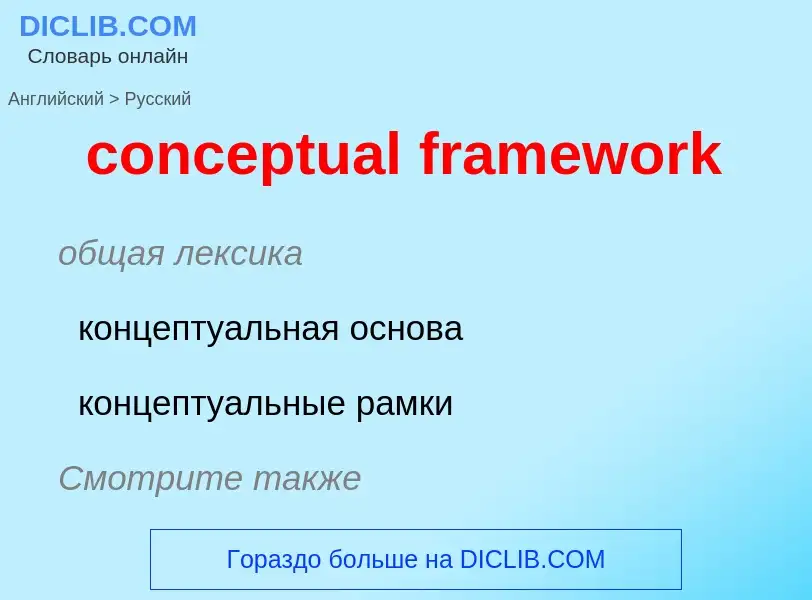Vertaling en analyse van woorden door kunstmatige intelligentie ChatGPT
Op deze pagina kunt u een gedetailleerde analyse krijgen van een woord of zin, geproduceerd met behulp van de beste kunstmatige intelligentietechnologie tot nu toe:
- hoe het woord wordt gebruikt
- gebruiksfrequentie
- het wordt vaker gebruikt in mondelinge of schriftelijke toespraken
- opties voor woordvertaling
- Gebruiksvoorbeelden (meerdere zinnen met vertaling)
- etymologie
conceptual framework - vertaling naar russisch
общая лексика
концептуальная основа
концептуальные рамки
Смотрите также
общая лексика
концептуальная модель
способ представления понятий или объектов предметной области
математика
содержательная модель
Смотрите также
Definitie
Wikipedia
A conceptual framework is an analytical tool with several variations and contexts. It can be applied in different categories of work where an overall picture is needed. It is used to make conceptual distinctions and organize ideas. Strong conceptual frameworks capture something real and do this in a way that is easy to remember and apply.
Isaiah Berlin used the metaphor of a "fox" and a "hedgehog" to make conceptual distinctions in how important philosophers and authors view the world. Berlin describes hedgehogs as those who use a single idea or organizing principle to view the world (such as Dante Alighieri, Blaise Pascal, Fyodor Dostoyevsky, Plato, Henrik Ibsen and Georg Wilhelm Friedrich Hegel). Foxes, on the other hand, incorporate a type of pluralism and view the world through multiple, sometimes conflicting, lenses (examples include Johann Wolfgang von Goethe, James Joyce, William Shakespeare, Aristotle, Herodotus, Molière, and Honoré de Balzac).
Economists use the conceptual framework of "supply" and "demand" to distinguish between the behavior and incentive systems of firms and consumers. Like many conceptual frameworks, supply and demand can be presented through visual or graphical representations (see demand curve). Both political science and economics use principal agent theory as a conceptual framework. The politics-administration dichotomy is a long-standing conceptual framework used in public administration. All three of these cases are examples of a macro level conceptual framework.


